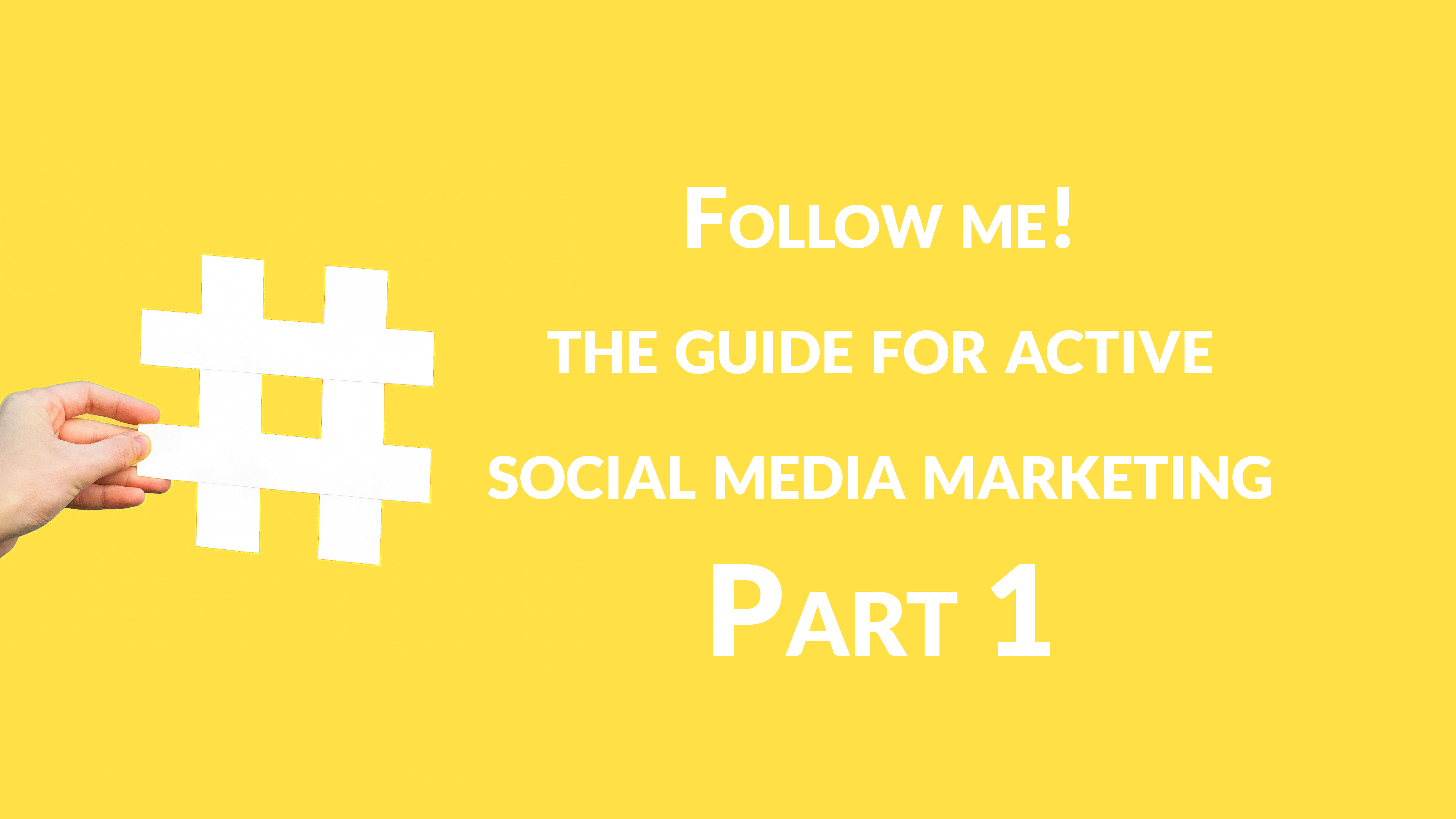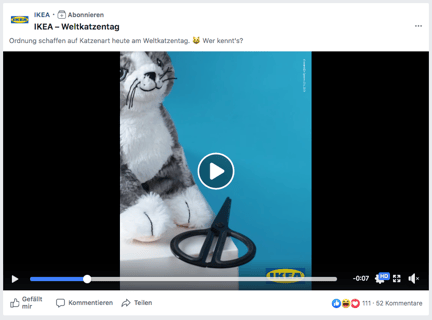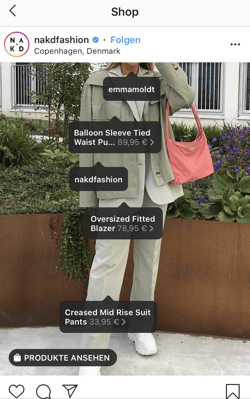Social Media is a jungle of endless possibilities for many people, that needs to be tamed. But first of all you have to gear up with the necessary equipment. In the first part of our series we cover the basics to prepare you perfectly. Join us on our expedition through the green hell which will turn out to be heaven soon enough.
1. Social media as a marketing discipline
3. The most important channels and their functions4. Stay tuned! How the series continues...
Waking up and immediately checking WhatsApp on the smartphone is part of the morning routine for many. On the go, messages are being sent, live videos recorded and the latest news consumed. Before falling asleep, we swipe through the Instagram Stories in the bluish light of our screens one last time – there is no doubt about the deep influence of social media in our everyday lives. And it will remain like this in the future, even if individual channels lose their significance and are replaced by others. Which leads us to the only real consistency in social media: change.
It is therefore important to have an overview of the channels offered and to understand how they work. Social media is more than ever a jungle of platforms and possibilities that appears confusing and chaotic from the outside. But digital marketing without social media? Unimaginable. Those who have not yet jumped on the bandwagon are at fault, because they miss out on target groups that make up half of the country's population. Of the current 8.76 million Austrians, impressive 4.4 million people use social media. In Germany it is 46 %, in Switzerland more than half of the total population.
In this multi-part series we guide you step by step through the sprawling jungle, until you are ready to lead your own expedition.
From hype to marketing discipline
In marketing and communications departments, Content Marketing and social media are considered extremely important. Social media campaigns are already part of the marketing mix of small and large companies. Companies use various channels to implement cross-media communication strategies and generate leads. Entire social media units and task forces have been created to achieve set goals. Agencies and departments are constantly trying to find the best channels to reach their customers. What used to be nice-to-have is now an absolute must-have. After all, companies cannot afford to do without social media in the truest sense of the word. And there are good reasons for that.
What's the point?
The reasons for companies to integrate social media into their marketing strategy are diverse – and necessary to reach new generations and target groups. According to a survey by Statista, German companies use social media to:
- create a marketing platform for their products and services
- maintain close contact with their customers
- increase their own brand awareness
- address the right target group with pinpoint accuracy
- increase their sales
- digitize customer support through messenger marketing and chatbots
Two buzzwords and their meaning
Buzzwords around social media are often used and misunderstood. However, very few people know what the central keyword Web 2.0 really means and why Facebook, Twitter and Co. could not exist at all without this digital evolution. So here is a brief definition of Web 2.0 and its social feature:
Web 2.0: From monologue to dialogue
Most believe that Web 2.0 was a new technical development of the Internet in the early 2000s, but they are wrong. The term merely describes the evolved use of the web. With it, the internet is no longer the only actor in the room that produces a monologue for users. On the contrary: Users are now the focus of attention, they can take part in the discussion personally, help shape the online world themselves and exchange information with each other. Because of this direct participation and empowerment of users, the term "democratisation of the net" is also used. The foundation stone for social media has been laid.
Social media: Marketplaces of the 21st century
In order to allow users to interact online, special platforms are needed, social networks to be precise. On websites and apps, people can communicate in a many-to-many way with people all over the world through their accounts. Interactivity and collaborative writing characterize this communication. One of the most important networks are: Facebook, Twitter, Instagram, Snapchat, VKontakte (Russia), Renren and WeChat (China) and blogs. But which platform offers what functions and which is suitable for the purposes of your company?
The Channels
There are many social networks and platforms, but each one offers different functions and purposes. The target groups also differ. As a company, you have to think carefully about which channels you want to use and which not. This is associated with far-reaching internal strategic decisions. Each channel must be used with an individual communication, content and media type strategy. This is exactly the crux of the matter, which will be discussed in detail in the next part of the series. But what channels are there actually?
First of all, let’s focus on the channels that are most relevant in the German-speaking region. A rough distinction is made between two areas:
Private and Business:
Facebook, Instagram, YouTube, Pinterest, Messenger Marketing, Twitter, Blogs, Podcasts
Pure business networks:
XING and LinkedIn
As diverse as the various social platforms are, as broad are their technical functions and target groups. A lot has changed in recent years: Messenger marketing and chatbots, for example, are becoming more and more important and are being fed diligently with investments by developers and owners. We briefly introduce the relevant channels, their applications and target groups:
Despite the widespread privacy scandal, Facebook is and remains the most important global player in the digital industry. With the acquisition of WhatsApp and Instagram, the company's market power has grown like no other. The organization continues to evolve through innovation, and the Facebook Messenger and Chatbots era has only just begun. Functions like Marketplace enable marketers to deliver their products and services to mobile audiences more accurately than any other social medium – at bargain prices.
|
Best Practice IKEA Austria operates active community management and is in close contact with its subscribers. On the occasion of the World Cat Day they shot a short video with your own products. Light entertainment, which was very well received by the audience and achieved many interactions. |
YouTube
"Video first!" is what several marketing departments say, and with good reason, because the medium has many advantages. YouTube is the world's largest and most popular video platform with a monthly reach of 1 billion people that is also a search engine and branding channel in one. The channel is so successful that it is referred to as the "new television".
|
Best Practice International companies take advantage of the extreme reach and started video campaigns on special occasions: e.g. McDonald's on Family Day or Snapchat on International Friendship Day. |
Even smaller companies can integrate social videos into their marketing strategy in order to become storytellers themselves. Do you have an exciting story that is worth telling? A World Day is a perfect match for your products and services? Excellent, now all you need is a strategy.
Is your company aimed at the target group between 18 and 39 years of age? Then it's time to communicate via Instagram, the app that reflects and shapes the zeitgeist of Generation Y and Z at its core. This ensures interaction rates that Facebook can only dream of. And high interaction rates lead to one thing above all else: increased attention. New functions such as stories and direct social selling provide companies with powerful tools to operate effective e-commerce – also through cooperation with influencers, which we will discuss in more detail in the second part of the series.
Interesting fact: 80 % of Instagram users follow at least one company, as long as its content is exciting.
|
Best Practice The NA-KD online clothing store has perfectly captured the desires of its target group. On their Instagram profile you can buy outfits directly via the social selling function. The website also offers the Instagram looks shopping feature. Buyers are encouraged to post their own pictures of their NA-KD outfits using the hashtag #beNAKD and tag the company to be featured on the site themselves. |
"Extremely motivated users, long-lasting content and qualitative traffic" sounds like music to marketers. And yet the sales channel Pinterest is still underestimated. The channel's strength lies above all in its ability to cover the purchase consideration phase of the customer journey on a large scale. 55 % of the users use the visual search engine for shopping, 93 % for direct planning of purchases. So let's get to work! The high potential of qualitative traffic on websites and online shops is just waiting to be deployed.
|
Best Practice Whether shop, service provider or blogger – Pinterest is there for everyone. The food manufacturer MAGGI has already recognized this. In the "MAGGI Kochstudio" on Pinterest, users are inspired to create new recipes via photos. The company also uses Pinterest pin codes on its packaging, which lead directly to the curated online pin boards. |
Messenger Marketing
They are the trend in the digital ecosystem and yet still rarely used by many companies. We are talking about messaging marketing on mobile apps like Facebook Messenger, WhatsApp, WeChat and Viper. The channels promise high reach with enormous opening and click rates. Your content is delivered unfiltered – directly via push notification onto the screens of your target group. Corporate communication with customers will also take place digitally in the future, including chatbots.
|
Best Practice Mercedes Benz promoted the new X-Class in a completely new way: with a competition in a Messenger chatbot. Users could take part in a virtual scavenger hunt about the new vehicle. You can read how exactly the hunt took place in the article. |
Because of its dynamism and topicality, Twitter is neither a blog nor a social network, but a real-time medium with 280 characters. It is best suited to receive customer feedback, engage in direct dialogue with journalists and sell products. And this is exactly the point of the matter: communication on Twitter is free of any hierarchy. Do you want to tweet with presidents and CEOs at eye level? Here is your opportunity. Twitter makes sense for companies because it's unconventional and allows an open exchange with all stakeholders. Under hashtags like #CleanHandsForAll on World Handwashing Day or #RepairDay on International Repair Day, companies with the right content strategy can generate high reach and sprouting interactions. By the way, this applies to all channels, especially if they offer hashtags. Always important: a community needs to be maintained, which means you have to take the time to stay in constant contact with it. Because tweeting, following back, retweeting and commenting requires exactly that – time.
|
Best Practice Everyone is talking about the Berliner Verkehrsbetriebe on Twitter. This is due to their campaign #weilwirdichlieben. Here you can read more about how really good community management with a lot of humor and self-irony leads to exploding user interactions. |
Let's talk business: XING and LinkedIn
The two networks are very similar in terms of benefits, functions and structure. While XING was founded in Germany and has the highest number of users there, LinkedIn from America is the better choice for international companies. But what about their usage? It is important not to treat the two platforms as pure sales channels just because they are about business. The rules for social media also apply here – in the case of the two business networks one should therefore limit oneself to "professional information and entertainment" for their audience. In reality this means:
Dos:
- Links to articles or events with added value for your network (e.g. on industry-relevant World Days)
- Useful industry knowledge and current news
- Links and contributions from experts and opinion leaders in your industry
- Pure product advertising
- Calendar mottoes without added value
- Private News
- Publicity
|
Best Practice It is also a way of disseminating information in a targeted manner: Deliver promoted posts directly to relevant people. LinkedIn has also published best practices and a playbook for companies that provide many tips and tricks on how to set up your own page for your target group. |
Blogs
They are the very first inhabitants of the social media world, which emerged with the possibility of independent design – and are currently experiencing a revival. Fashion, travel and food blogs are more popular now than ever before. And recipients appreciate one thing in particular: authentic, personal storytelling by the author. Companies also create blogs on their own company websites in order to share their philosophy, new developments, expert knowledge and products with the world. The most important thing is that this type of communication makes companies seem approachable and humane (similar to Twitter). Direct targeting, high reach, market research, gaining influence and increasing online reputation are the main goals of corporate blogs. A small preview?
|
Best Practice The SCHMACHTL knowledge blog of our customer is an example of expert knowledge published online. |
Podcasts
"Broadcasting" from the "iPod", the term is actually self-explanatory. But what significance do the audio contributions have for the marketing mix? A big advantage of the medium is its length. While the attention span for videos lasts a maximum of three minutes, the average duration of a podcast is between 30 and 80 minutes. Users like to take this time, as they do with a thrilling feature film. Perhaps you think: "Podcasts? That's yesterday's news." – and you're not wrong. Because podcasts, in addition with blogs, are among the cornerstones of the early social media world. But don't let that mislead you! The podcast hype is currently experiencing a revival and is booming like never before, especially in the USA. Particularly popular? Business and Tech Casts. That is also noticeable in the statistics: The use of Podcasts converges to those of videos. Are you still waiting for the perfect time to produce your own, targeted audio content? A little tip: it's right now. Become a podcast expert in your niche and make direct contact with an attractive, attentive target group – before the German-speaking market is saturated. Podcasts are a great way to publish content marketing and successfully brand employers.
|
Best Practice In its podcast #ichbinjetzt, the health insurance company AOK introduces young people who talk about health challenges such as depression or other illnesses in their lives. They thus create a platform on which important topics can be raised and discussed – the sale of their own services is not the main focus here. |
Stay tuned...
No matter how big or small your company is and in which branch you are active, with the right use of social media there is something in it for everyone! But there is a lot to be done: What is my objective? Which channel do I use and how can I achieve the optimal effect?
What you should never forget is consistency. Just because you have created a social media account certainly doesn't mean that enquiries and interactions will flow from one day to the next. Long-term determination, however, leads you there. Which brings us to the next steps: The selection of the right channel to reach your target group and the development of the optimal social media strategy. Answers will follow in the next articles.
Sources:
Grabs, Anne/Bannour, Karim-Patrick/Vogl, Elisabeth: Follow me! Erfolgreiches Social Media Marketing mit Facebook, Instagram, Pinterest und Co. Bonn: Rheinwerk Verlag. 2018.
https://onlinemarketing.de/lexikon/definition-social-media
Credit: ©khosrork/Adobe Stock





